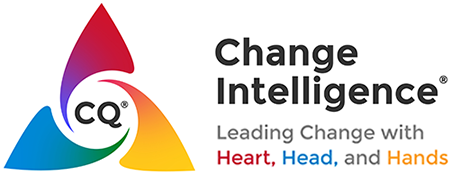The CQ System—which enables change leaders to diagnose their change intelligence, equips them with developmental strategies, and shows them how to be powerful agents of transformation—all starts with the fact that each change leader has a basic tendency to lead with his or her Heart, Head, Hands, or some combination of the three. If you lead mainly from the Heart, you connect with people emotionally (I want it!). If you lead from the Head, you connect with people cognitively (I get it!). And if you lead from the Hands, you connect with people behaviorally (I can do it!).
It is not inherently better or worse to focus on the Heart or the Head or the Hands. However, the effectiveness of a change leadership style shifts in different scenarios depending on the type of change occurring, the business objective, the organizational culture, the people involved, and many other factors.
Of course, no one leads completely from the Heart, or Head, or Hands. Each of us is a blend of all three, and a small percentage of people do lead with all three with equal savvy. But most of us tend to rely primarily on one or two of these aspects as we lead through change.
Many people are unaware of their dominant aspect (or aspects), and of the impact their leadership style has on the change initiatives they lead. But the effect of how you lead during change is significant—overreliance on the Heart, Head, or Hands to the detriment of the other aspects can alienate the people around you and limit your success. Fortunately, we can all build our capacity to use all three aspects and adapt our change leadership style to be more effective in any situation.
As with any leadership competency, we need to have the will to build the skill. Learning that sticks, like change that sticks, needs to be self-initiated and self-directed. People need to have the opportunity to focus their attention on the goal and then to uncover their own insights along the journey.
Fortunately, we don’t have to do it all alone. We can strengthen our less-used change muscles through consistent exercise. We can surround ourselves with others who excel in the areas we’re weaker in. And we can get coaching on how to craft systems and structures to remind us to focus on those areas that are not typically on our radar screens.
Change at the individual level starts with awareness, moves to acceptance, and leads to action. The intent of this blog and my book, Change Intelligence, is to help you become aware of your change leadership style, accept your strengths and weaknesses, and start to build your CQ to catalyze powerful change in your career, team, and organization.
